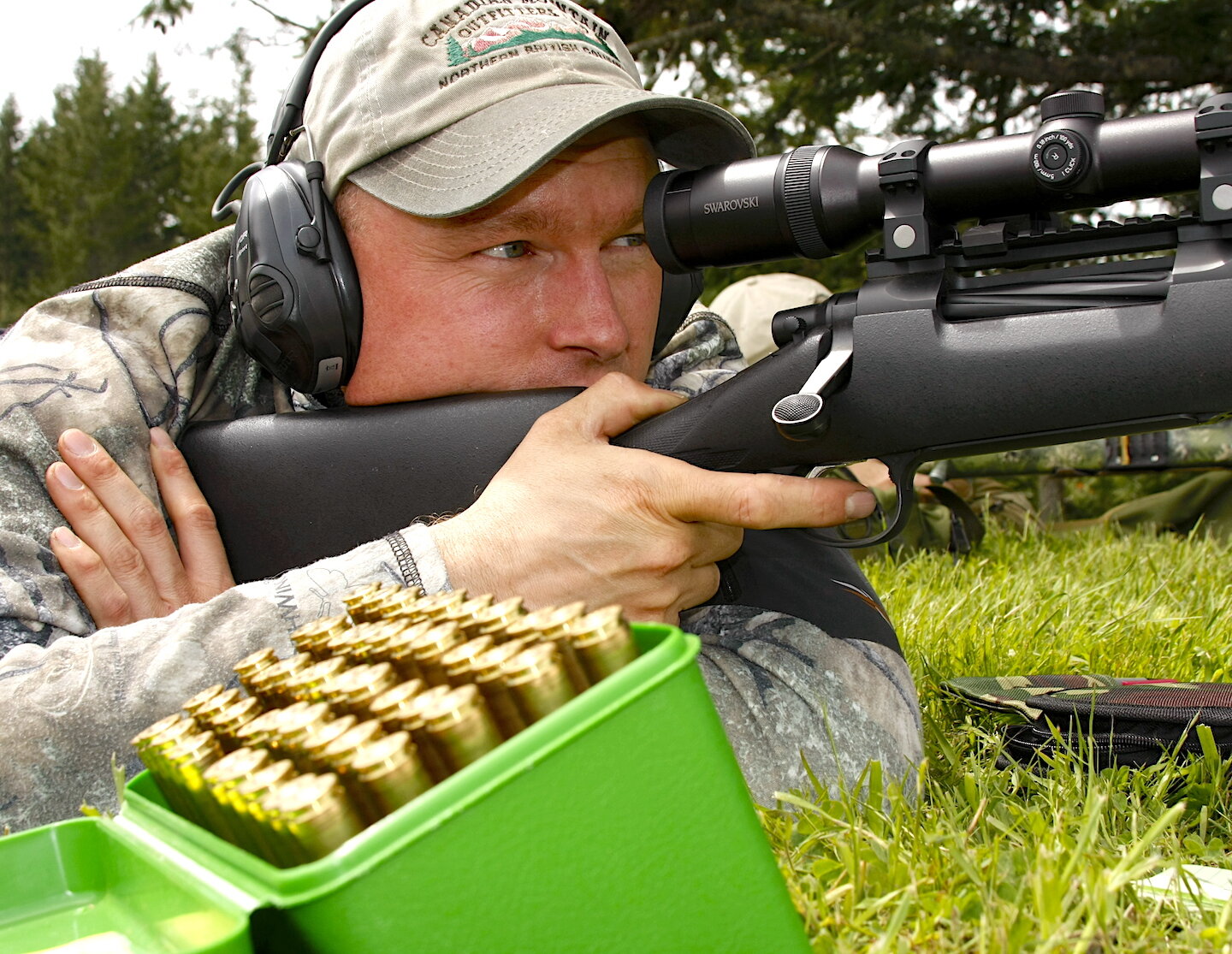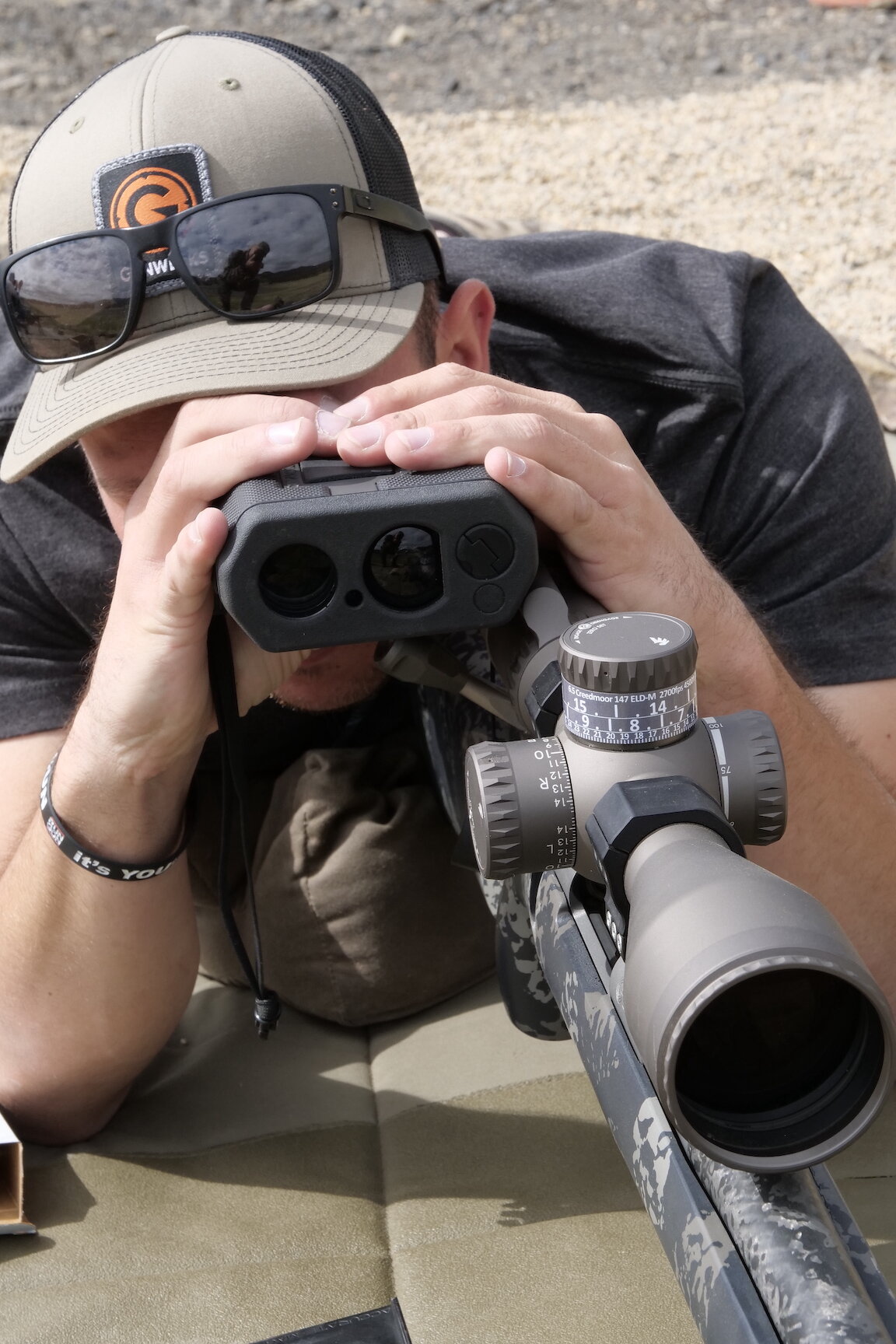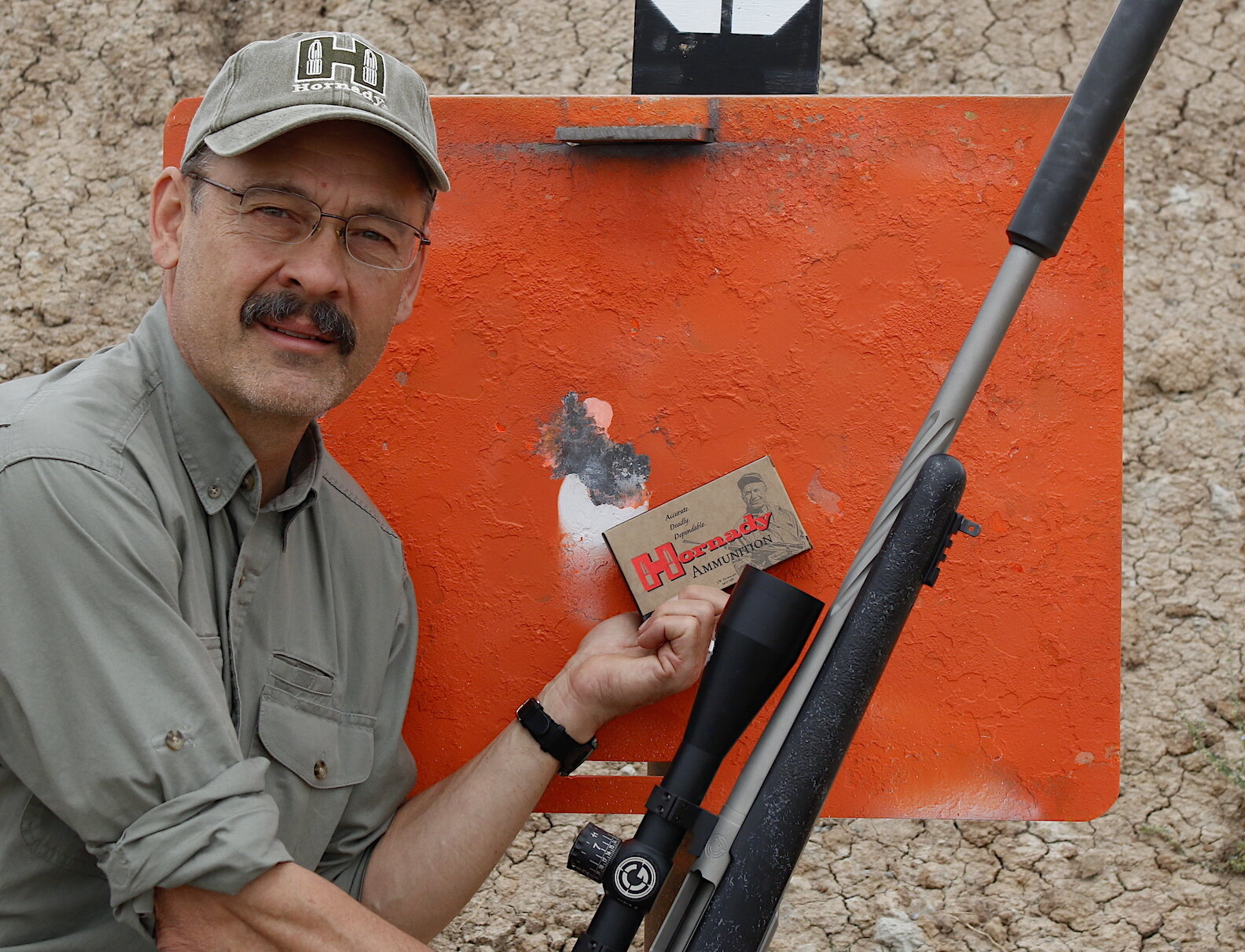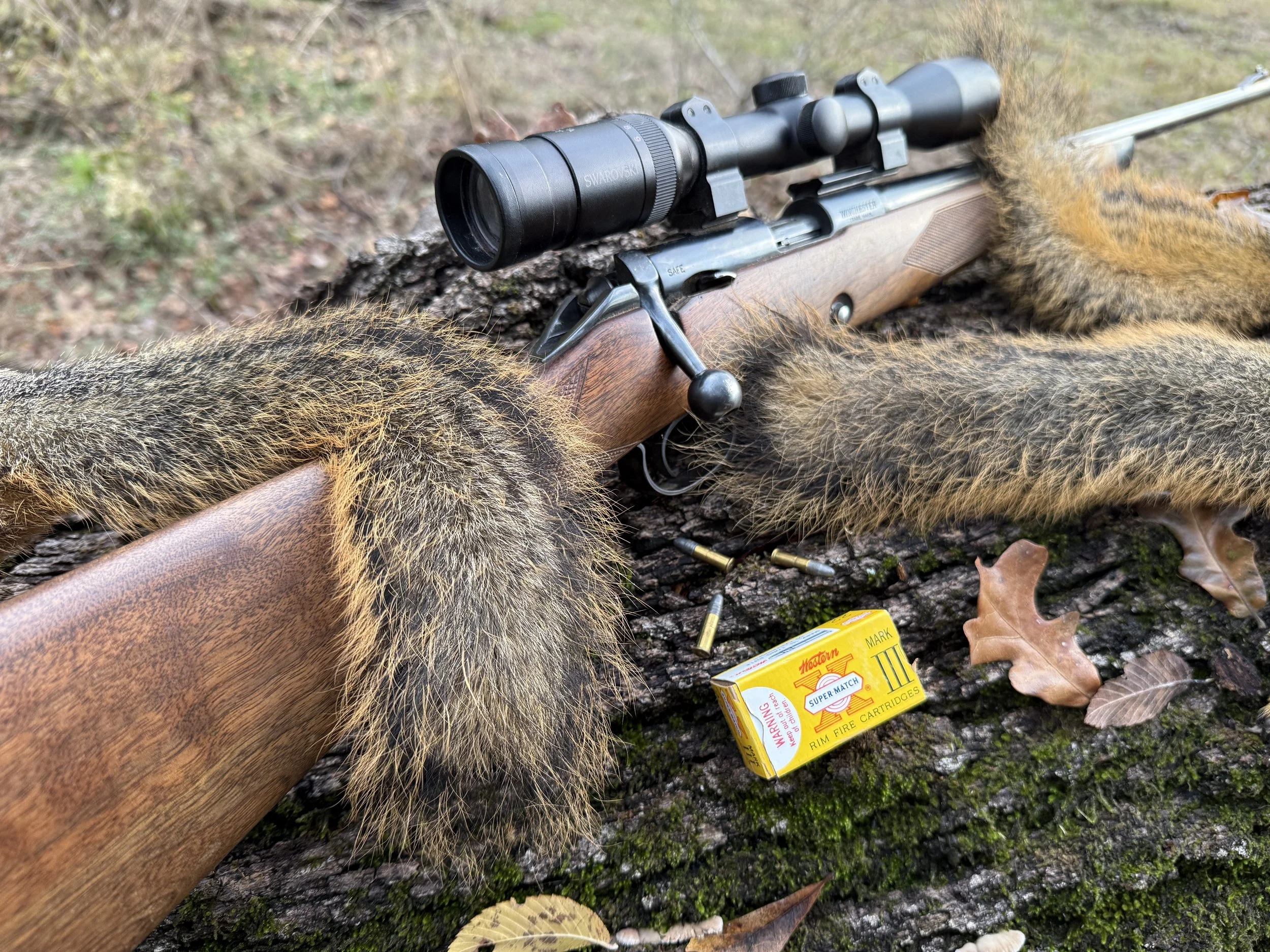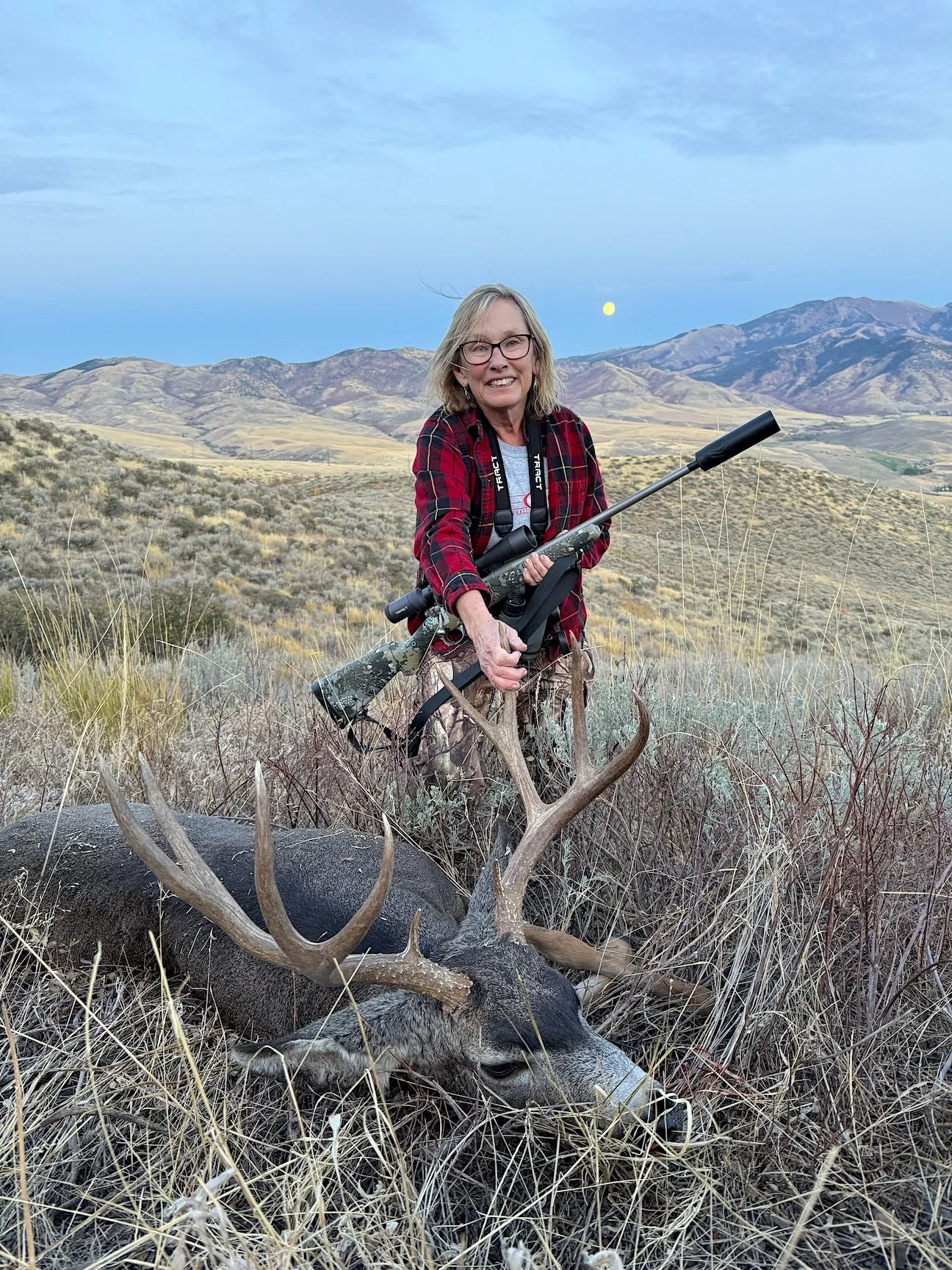Why Long Range Shooting is a Good Thing
Sorry guys, but all this crazy, long range shooting is a good thing.
Before you hang me out to desiccate in the sun, hear me out and think about my rationale.
As we all know, developments in rifles, cartridges, scopes, and especially bullets have made it easier than ever to place a bullet where we want it at obscene distances. But none of this would be possible without a device that popped up in 2000 — an accurate, fast, light, compact laser rangefinder.
Yes, Leica introduced the first sporting laser rangefinder at the start of the new millennium. I remember this because I was privileged to test drive one on a Sonora Coues deer hunt in late 1999. When the laser indicated my chosen buck was 401 yards away, I knew I had to sneak closer. When it next indicated 351 yards, I was reassured I was within point blank range of the 100-grain Barnes X bullet in my Rifles, Inc. 257 Weatherby Magnum. One shot later, a spectacular Coues buck wearing 121 inches of antler was mine. Those ubiquitous pocket lasers are what make all this long distance touching feasible. Here’s why….
Our bullets have been able to fly 3 miles or so since at least 1892 when the 7x57mm Mauser popped up. The Springfield 30-06 battle rifle in WW1 sported a ladder sight graduated for aiming out to 2,850 yards. That’s in excess of 1.5 miles. But even with our flattest shooting cartridges, after 500 yards or so bullet drop becomes so severe that misjudging distance by just a few yards can result in a miss. The high B.C. Nosler 190-grain ABLR shot from a 308 Winchester at 2,624 fps drops 8 inches between 500 yards and 525 yards. Over the 25 yards between 575 yards and 600 yards it plummets 10 inches. Even the 143-grain ELD-X from a 6.5 PRC drops 7 inches between 600 and 625 yards. Far enough for miss or wound.
Clearly, to hit anything beyond 500 yards requires a precise measure of distance.
So, the advent of the laser rangefinder might not have started long range shooting, but it made it effective. And thereafter followed new cartridges, long, efficient, high B.C. bullets, and fast twist barrels to stabilize them. And then handheld computers to calculate all that complicated math.
With these tools it is possible to predict within an inch or three where your bullet is going to land at irresponsible distances. But…
And this is a big BUT. The shooter has to be good enough to launch without disturbing the launchpad. That’s where all the training comes in. And it works. A dedicated, hard working, hard training shooter can indeed become proficient at digesting the necessary data, adjusting the scope, and sending bullets that hit as close to the heart of the target at 1,000 yards as grandpa could do with his 30-06 at 300 yards. But…
Yes, there’s another but, and it’s even bigger than the last big BUT. The wind. All our tools and computers can predict drop because gravity is constant. Wind is fickle. And wind alters bullet trajectory radically. So we invented wind meters. And we upgraded and tweaked and improved them until they not only read wind accurately but cough up solutions. It’s all very digital and precise but…
You getting tired of all these buts yet? Well, I’m glad you’ve hung around because this is the biggest BUT yet. Wind isn’t constant! No matter how precisely we measure it where we are, no matter how carefully we asses it downrange via blowing grass, bouncing boughs and angling heat mirage, we cannot perfectly predict how much it’s going to deflect our bullets.
This is why high B.C. bullets have become so popular. They minimize wind deflection. Because they’re always heavy for caliber they also reduce muzzle velocity, but that’s a fair trade for reduced wind deflection.
The upshot of all of this is a remarkable ability to score first hits on 10-inch circles of steel at 700, 1,000, 1,250, even 1,500 yards. And this is a good thing. I’m glad hundred of riflemen and women are doing it. I wish more would.
But not when hunting.
Now we’re getting to my point. Notice I wrote at the start of this “long range shooting is a good thing.” I did not write “long range shooting at game while hunting is a good thing.” Because it isn’t.
So now the other side is going to hang me out to dry.
But let’s calm down and consider. Even if a well-trained and equipped long range shooter can hit more consistently at 1,000 yards than I can at 100, it’s still irresponsible to target game at such extreme range just because of time of flight. The 6.5 PRC sends a .625 B.C. bullet flying at 2,960 fps. It takes that bullet 1.46 seconds to reach 1,000 yards. Add a split second for the shooter’s brain to move the “shoot” signal from his brain to his finger, another split second for the trigger to break and hammer to fall, and we’re looking at a 1.5-, possibly 1.7-second delay.
Now, what if the animated target, say a broadside elk, decides at that precise moment to step forward or turn right? The planned heart shot becomes a gut or rump shot. Notice we’re not even considering the possibility the shooter called the wind wrong by so much as 2 mph (which would have moved the bullet an additional FOOT.) We’re just allowing the animal to make a small move over the course of 1.5 seconds.
As if that weren’t bad enough, the shooter now has to traverse 1,000 yards, well over 1/2 mile, and find the spot at which the animal was standing when hit. There could be a canyon in the way. A river. A thicket.
It doesn’t require much contemplating to understand why extremely long shots are not the best idea when hunting. But I remain convinced long-range shooting is a good thing. And here’s why:
The popularity of hitting or attempting to hit inanimate targets at extreme ranges sells more rifles, more scopes, more ammunition. And those sales each generate an 11% tax dedicated to hunting, fishing, and wildlife. They are Pittman-Robertson funds used to buy or improve wildlife habitat, reintroduce species, build access roads and boat ramps for public hunting access, construct and maintain shooting ranges… Selling more guns and ammo also keeps our gun and ammo manufacturers thriving — to the consternation of anti-gun and anti-hunting forces. Building more rifles, ammo, scopes, bipods, wind meters, suppressors, ballistic calculators, steel gongs and all the other paraphernalia that is part and parcel of long-range shooting provides jobs for thousands of workers.
BUY NOW
Friends, we need more shooters if we are to defend the 2nd Amendment. We need political allies. We need responsible folks to represent the safe and sane employment of firearms.
Finally, and this may seem a stretch but really isn’t, long range shooters are trained and capable of defending our nation should the need arise to call them into military service. We like to pretend that in this civilized world and this country we are far removed from attack and war, but history argues strongly against that notion. A country of skilled civilian marksmen is nothing against which to take your chances. Guerilla fighters across the globe have for decades proven a stubborn, effective force against military invasion. Guerillas who can launch precision strikes from a mile are doubly effective. Can you imagine moving a convoy down a winding Kentucky road visible from a wooded hilltop a mile out with two or three long range sport shooters atop it?
So, in my final analysis, long range hunting is far from optimum. But long range shooting is a good thing. Long live long range rifles, scopes, cartridges, bullets, wind meters… Long live long range shooting.



